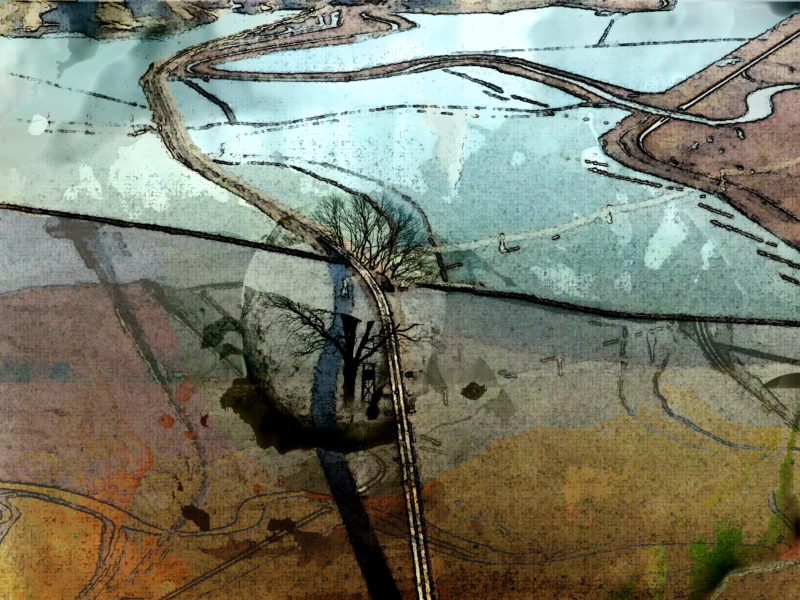I’m torn today between choices of theme for the blog. Contradictions? Surprises? Puzzles? Since I dislike puzzles, feel ambivalent about surprises and embrace contradictions, you can guess the winner, even if you skipped reading the title….
Here is Monday’s story, then. Happened this summer.

Having hosted the loveliest of young women for a couple of nights, you get up too late to say Good Bye – she had to leave before the crack of dawn to return to New York City where she lives, or to meet investors for her science media company, Massive, in Los Angeles, or, for all I know, attend a science conference in Mumbai – I forgot, I’m speculating. Truth is, though, I missed her, she left and left behind a hostess gift.

A deck of Tarot cards. If you are like me, you will have to look up what Tarot actually is beyond the inkling that it is used for soothsaying. Here is Wikipedia to the rescue:
The tarot (/ˈtæroʊ/; first known as trionfi and later as tarocchi or tarock) is a pack of playing cards, used from the mid-15th century in various parts of Europe to play games such as Italian tarocchini, French tarot and Austrian Königrufen, of which many are still played today.[1] In the late 18th century, some tarot packs began to be used as a trend for divination via tarot card reading and cartomancy leading to custom packs developed for such occultpurposes.
Among English-speaking countries where these games are not played frequently, tarot cards are used primarily for novelty and divinatory purposes, usually using specially designed packs.[2] Some occult enthusiasts make relative claims to ancient Egypt, the Kabbalah, Indian Tantra, the I-Ching, among many others, though no documented evidence of such origins or of the usage of tarot for divination before the 18th century has been demonstrated to a scholarly standard .[2][3]The three most common decks used in esoteric tarot are the Tarot of Marseilles, the Rider-Waite-Smith tarot deck, and the Thoth tarot deck.
Add to them now this deck: Women of Science!

Aha, contradiction of a former scientist giving a gift of a tarot cards to a former scientist is resolved! And gives me the chance to introduce Nadja Oertelt, who holds a BS in Neuroscience from MIT, has done some amazing work in popularizing scientific research as a media producer and documentary filmmaker and is a visual artist. You can learn more about her and her company’s approach in this 2017 interview in Forbes or look at the trailer of her documentary Unorthodox of young orthodox Jews forging their own path.



Most interesting to me, though, is her insight that there need to be better ways to connect scientists and the public, and communicate scientific explorations or findings in a fashion that speaks to the lay folks, in particularly the young. In a society where science is, at best, not always trusted and, at worst, maligned as an elitist preoccupation that is wasting money, colliding with literal interpretation of scripture or annoyingly calling out the dangers of ruthless exploitation of natural resources or any other money-making enterprise – take your pick – endeavors that make science transparent and its importance understood are filling a significant need.

In Nadja’s own words, when someone raises an eyebrow at the contradictory combination of science and magic for a fundraising Tarot card deck,
“At Massive we know from our experience, and from the vast trove of research on effective science communication, that science stories centered on human experience and stories with emotional valence have greater impact on audiences. We want people who use this deck to learn about the history of science, and think creatively about how we can learn from the discoveries and failures, eureka moments and mistakes of the past to inform our future research and decision-making processes…as a species. … Our main goal as science communicators is to get people excited about science, to make science a more inclusive space, and to give people a sense of agency in scientific spaces. We want people to prioritize scientific thinking in their own lives and in their communities. We want people to do more research, to ask questions, and to remain curious. We don’t think creativity, storytelling, magical thinking and scientific thinking are totally disparate subjects. Neither did Jacob Bronowsky, Richard Feynman, Alan Turing, Marvin Minsky or Oliver Sacks.”

Here is the description of the cards:
Created with Matteo Farinella and Massive Science, this crowdfunded 78 card Science Tarot Deck is a game of cards that helps us tell stories about our future based on principles of science. The Women of Science Tarot Deck channels the powerful, pioneering women of STEM alongside fundamental concepts in science, math, engineering and technology to help you tell stories about the future. The deck is a fun way to learn about our past and think about ways of tackling the big problems that await us as a species. The Tarot deck has been used since the 15th century as a framework for communal storytelling, soothsaying and prediction. We’ve updated our tarot to reflect our scientific, 21st century curiosity for shaping the world. The most transformative ways of thinking are not magic: they are real, rooted in STEM and they can help us collectively think about the future.
And here is my favorite, of course; what’s a bit of narrative adjustment to the definition of science between friends…

Since I don’t know how to read the cards, let me make a prediction for the future revealed to me in this morning’s coffee grinds: by bridging diverse fields and pursuing something that’ll improve all of society this young woman will make a significant contribution.

And here’s to intercontinental story telling in music – collision of protons, God particle, Geneva and all… The Higgs Boson Blues.









































































































